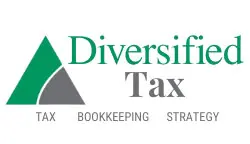Understanding the Fundamentals of Single-Entry Bookkeeping
Understanding the Fundamentals of Single-Entry Bookkeeping
Single entry bookkeeping is a simplified accounting system that has been used by small businesses and individuals for centuries. Unlike the more complex double-entry system, single-entry bookkeeping involves recording only one side of each financial transaction, making it a more straightforward and less time-consuming approach to managing finances. In this article, we will delve into the key aspects of single-entry bookkeeping, exploring its benefits, limitations, and practical applications in the modern business landscape.
The Basics of Single-Entry Bookkeeping
At its core, single-entry bookkeeping is a system that records financial transactions by documenting only the inflows and outflows of cash or other assets. This contrasts with the double-entry system, which requires recording both the debit and credit sides of each transaction. In the single-entry approach, the focus is on maintaining a simple record of the business’s cash flow, rather than on the complex interplay of accounts and balances that characterize double-entry bookkeeping.
Understanding the Cash Book
The primary tool in single-entry bookkeeping is the cash book, which serves as a chronological record of all cash receipts and payments. This ledger tracks the movement of cash, with each entry representing a specific transaction, such as a sale, a purchase, or a payment. By maintaining an accurate cash book, business owners can monitor their cash flow and help ensure that their records accurately reflect the current state of their finances.
Simplicity and Flexibility
One of the key potential advantages of single-entry bookkeeping is its simplicity. The straightforward nature of this system makes it an attractive option for small businesses, sole proprietorships, and individuals who may not require the level of detail and precision offered by double-entry bookkeeping. Additionally, single-entry bookkeeping is more flexible, allowing for adjustments and modifications to the records as needed, without the complex balancing requirements of the double-entry approach.
Limitations and Drawbacks of Single-Entry Bookkeeping
While single-entry bookkeeping offers simplicity and ease of use, it does come with certain limitations that businesses should be aware of. These drawbacks include:
Lack of Comprehensive Reporting
Single-entry bookkeeping provides a limited view of a business’s financial health, as it only records cash inflows and outflows. This means that important financial information, such as accounts receivable, accounts payable, and asset depreciation, are not captured in the records. As a result, business owners may lack a complete understanding of their financial position, making it more challenging to make informed decisions.
Increased Risk of Errors and Discrepancies
Without the built-in checks and balances of the double-entry system, single-entry bookkeeping is more susceptible to errors and discrepancies. The lack of a comprehensive system of accounts makes it more difficult to detect and correct mistakes, potentially leading to inaccurate financial reporting and decision-making.
Challenges in Compliance and Taxation
For businesses operating in a regulated environment or subject to taxation, the limited financial information provided by single-entry bookkeeping may not be sufficient to meet compliance requirements. Regulatory bodies and tax authorities often require more detailed financial statements and records, which can be challenging to generate using a single-entry system.
Transitioning from Single Entry to Double Entry Bookkeeping
As businesses grow and their financial needs become more complex, many find it necessary to transition from single-entry to double-entry bookkeeping. This shift can provide a more comprehensive understanding of the business’s financial position, helping to enable better decision-making and improved compliance with regulatory requirements.
Assessing the Need for Change
Businesses should carefully evaluate their financial needs and the limitations of their current bookkeeping system to determine if a transition to double-entry bookkeeping is necessary. Factors to consider include the complexity of the business, the need for more detailed financial reporting, and the requirements of external stakeholders, such as lenders or investors.
Implementing the Transition
Transitioning from single-entry to double-entry bookkeeping can be a significant undertaking, requiring careful planning and execution. This process may involve:
- Conducting a comprehensive review of the business’s financial records and transactions
- Establishing a new chart of accounts and implementing double-entry accounting principles
- Transferring historical data from the single-entry system to the new double-entry system
- Training staff on the new bookkeeping procedures and processes
Ongoing Maintenance and Optimization
Once the transition to double-entry bookkeeping is complete, businesses must ensure that the new system is properly maintained and optimized to meet their evolving financial needs. This may involve regular reviews of the chart of accounts, the implementation of internal controls, and the adoption of advanced accounting software to streamline the bookkeeping process.
Practical Applications of Single-Entry Bookkeeping
Despite the limitations of single-entry bookkeeping, this system can still be a practical and valuable tool for certain businesses and individuals. Here are some common applications of single-entry bookkeeping:
Small Businesses and Sole Proprietorships
Single-entry bookkeeping is often the preferred method for small businesses and sole proprietorships that have relatively simple financial transactions and do not require the level of detail provided by double-entry bookkeeping. This approach can be particularly useful for businesses with a limited number of cash-based transactions, such as retail stores or service providers.
Personal Finance Management
Individuals and households can also potentially benefit from the simplicity of single-entry bookkeeping when managing their personal finances. By maintaining a cash book to track income and expenses, individuals can gain a better understanding of their cash flow and make more informed financial decisions.
Nonprofit Organizations
Many nonprofit organizations, such as charities and community groups, often use single-entry bookkeeping to record their financial activities. This approach can be well-suited for these organizations, as they typically have a limited number of transactions and may not require the level of detail provided by double-entry bookkeeping.
Conclusion
Single-entry bookkeeping is a time-honored and simplified approach to managing financial records, offering a straightforward and accessible solution for businesses and individuals with relatively uncomplicated financial needs. While it may lack the comprehensive reporting and compliance capabilities of double-entry bookkeeping, single-entry bookkeeping can still be a valuable tool in certain contexts, particularly for small businesses, sole proprietorships, and personal finance management.




